This page was created as my final writing project for Advanced Writing in the Arts, Media and Design in April, 2024. Majority of the photographs featured below were taken during my Co-Op with Stanford University in 2022.
Unveiling Sports Magic
When a sporting event is televised, it may seem like magic. Every important moment that occurs in the live game can be replayed from numerous angles on the broadcast without delay. The ability to interlay live content with instant replays on sports broadcasts reveal the labor and dedication of broadcasting crews that make this magic happen. This page will take you behind the scenes of the different roles that comprise a broadcasting crew and the technological work that occurs to produce a successful sports broadcast.
Video Credits: The Verge (YouTube)
This video goes behind the scenes of a New England Patriots game to show the work and technology that creates the magic on screen.
YouTube Description:
The NFL's most exciting game isn't played on the field. It happens behind the scenes, as hundreds of cast and crew come together to turn a football game into a football broadcast, the show hundred of millions of viewers see every week. When the New England Patriots played the New Orleans Saints, we saw Fox make it happen.
-

Director
In charge of the broadcast, the director is stationed in the control room during the game and decides which camera angles will be shown and when to show them. All crew members are able to hear the decisions being made in the control room through Clear-Coms, the intercom system that allows everyone to be connected via headsets. The director is responsible for prepping cameras to go live and providing adjustments to the camera operators through Clear-Coms. When the director is planning to change camera angles, they will say, “Ready Camera #” to alert the camera operator that their camera will be going live shortly. When the director then states, “Take Camera #”, the technical director will switch to that camera angle which will remain live until the director calls for the next camea angle in the same way.
-
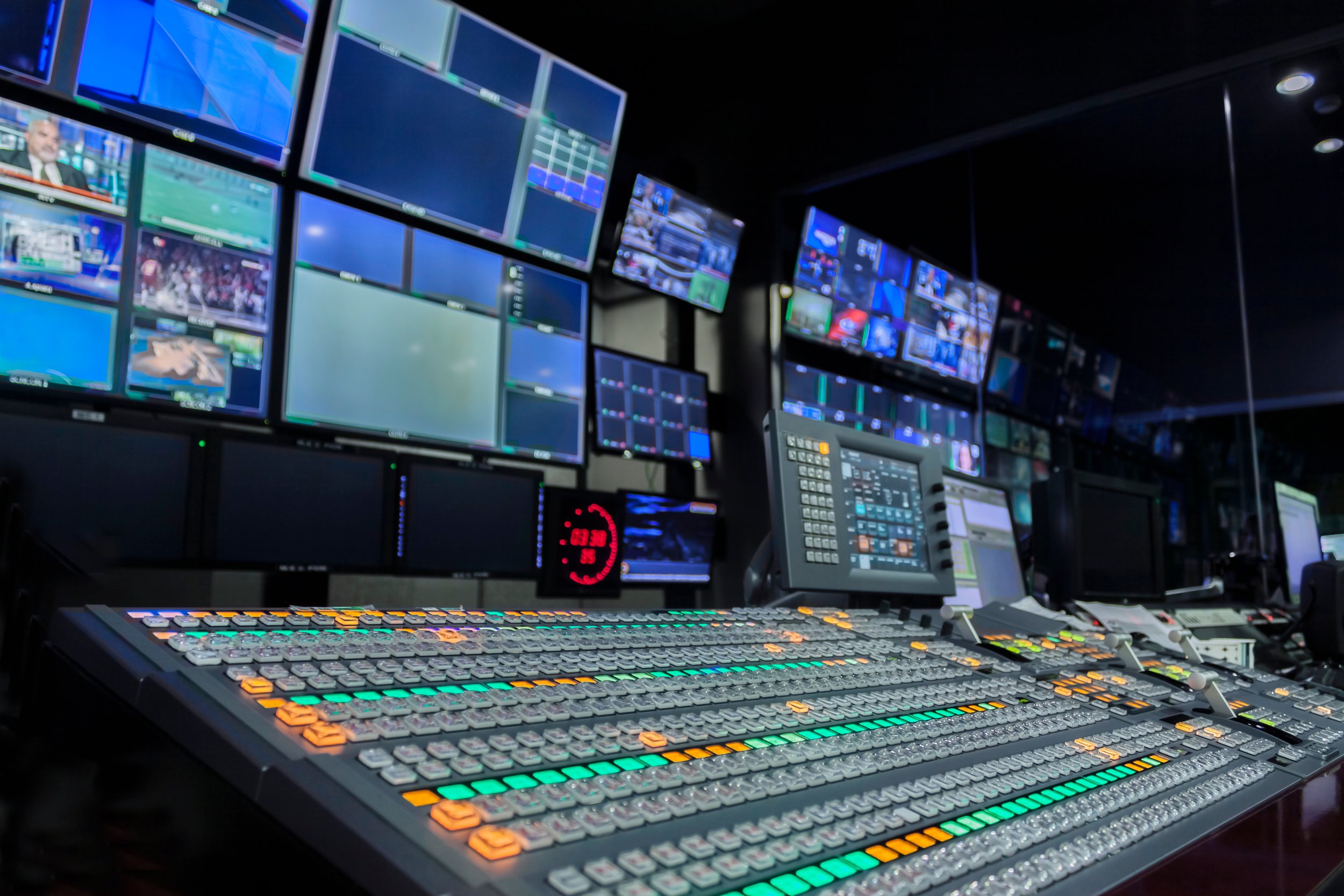
Technical Director
The technical director usually sits directly next to the director in the control room and is responsible for operating the video switchboard that controls which camera angle is on the live broadcast. When the director announces on Clear-Coms “Take Camera #”, it is up to the technical director next to them to make sure that the correct camera angle that was called for is put on the live broadcast. As a professional button pusher, it is essential that the technical director is familiar with the video switchboard because any errors that happen while operating that equipment will be shown on the live broadcast. It is also important that the technical director double checks that a camera is in the correct position when the director calls for it. If a camera is not in focus or needs an adjustment made prior to going live, the technical director must inform the director of this so that the director can choose an alternatively camera for the time being.
-
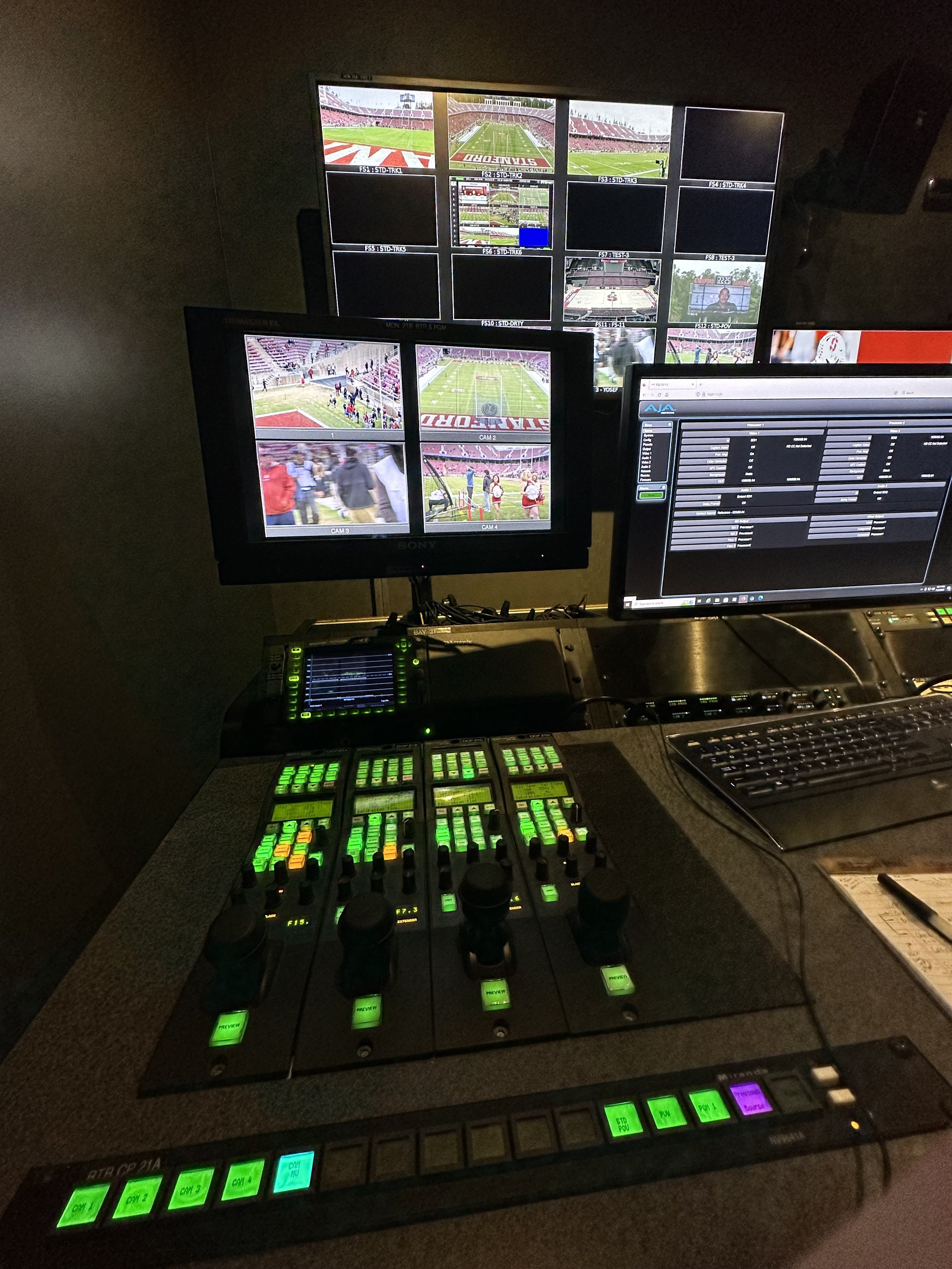
Shader
The shader works alongside the director in the control room to ensure that the coloring of each camera is accurate and consistent throughout the event. Since cameras are stationed in different spots throughout the field or arena, the lighting may differ between them. This is why it is important that the shader adjusts the coloring of each camera prior to the event to make sure the cameras match one another as closely as possible. During the broadcast, the director will ask the shader to make color adjustments as needed. To make these adjustments, the shader must understand waveform color graphs and how to use the information given through those graphs to adjust the coloring of a specific camera. It is also very important that the shader has access to high quality monitors showing each of the cameras so that they can determine if the colors match.
-
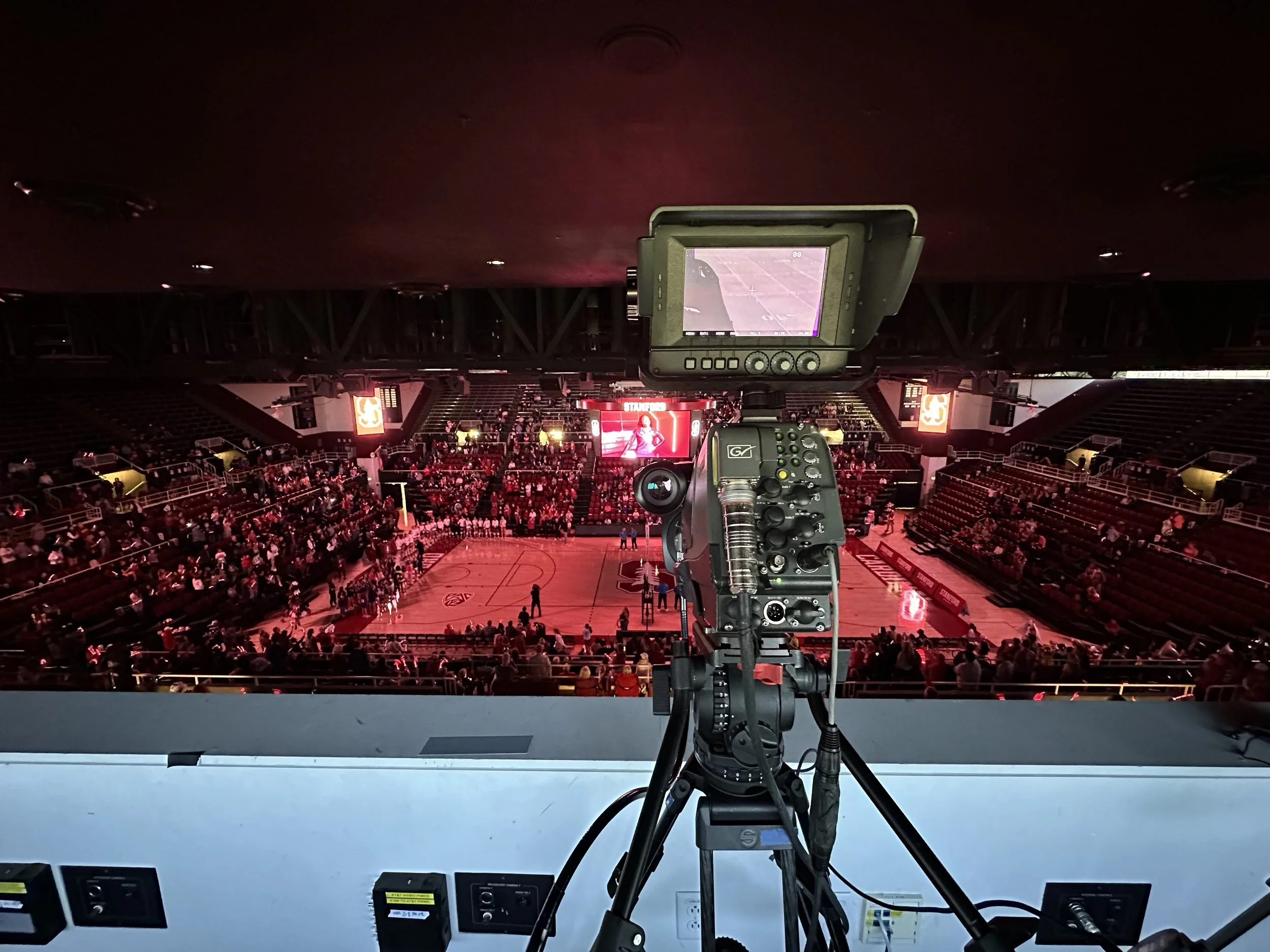
Camera Operator
During a broadcast, camera operators are stationed throughout the field or arena to film the event from multiple angles. To differentiate between the cameras, each is given a number based on how important that specific angle is to the broadcast. The main camera that the broadcast typically relies the most on is usually positioned at the center line of the playing field and referred to as Camera 1. The camera operators are responsible for getting their cameras and other equipment from storage rooms at the venue and then must set everything up. Once set up, the camera operators must work with the technical director to make sure that the control room is receiving the camera feed. After that, camera operators must check in with the shader to set the correct white balance color on the camera and discuss any color issues. It is important that camera operators listen carefully to the decisions being made by the director over their headset so they know when their camera is live.
-
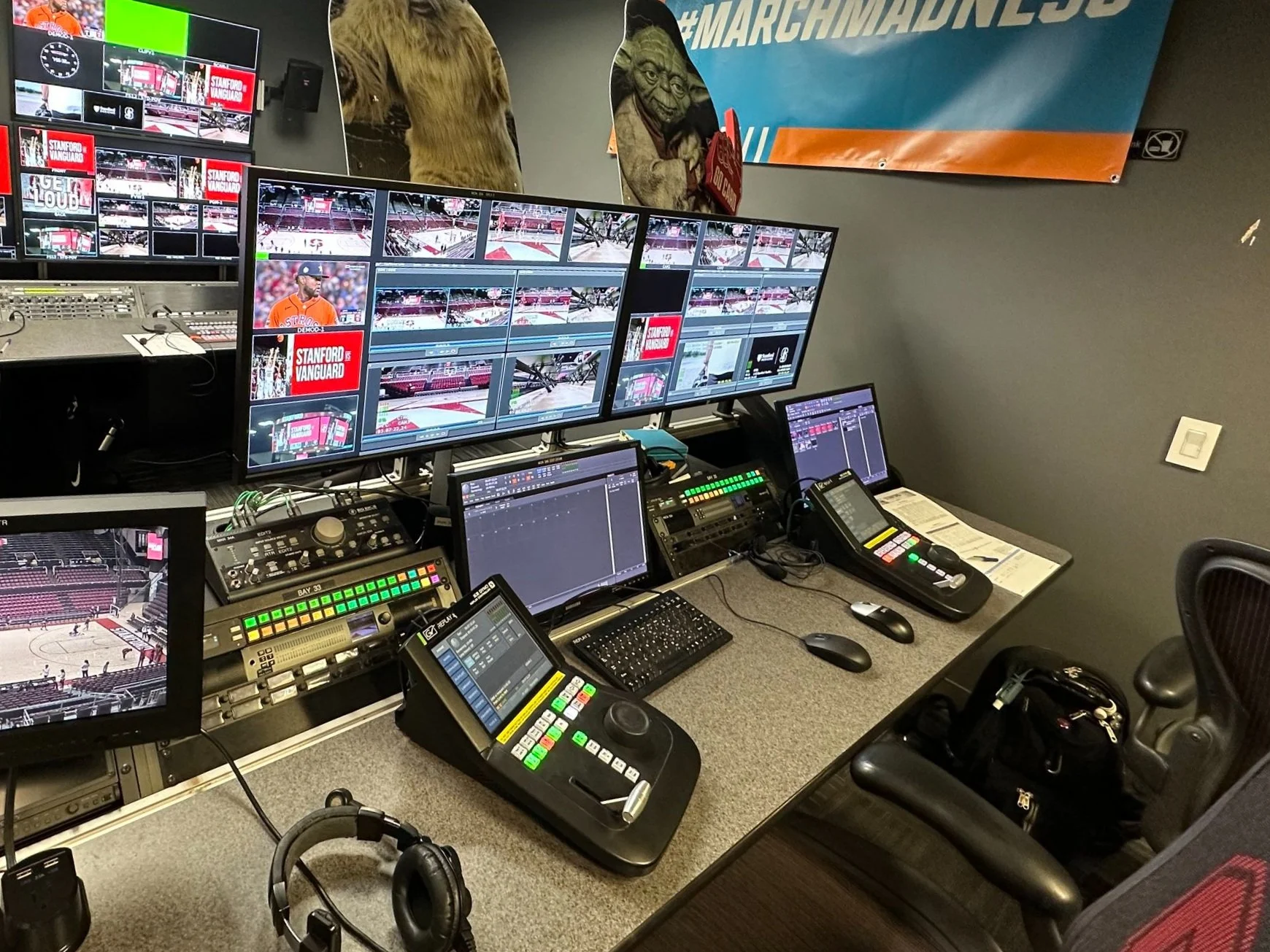
Replay Operator
The replay operator works in the control room and is typically seated behind the director with their own monitors to view every camera angle. When action occurs that the director wants to replay on the broadcast, it is up to the replay operator to find the best angle of that moment, clip the footage, and play it back at an appropriate speed when the technical director switches the replay to the live broadcast. Important moments in the game are always followed by replays, so replay operators must always be prepared to offer the ideal clip of those moments within a few seconds of the play ending. Replay operators are also responsible for putting together highlight reels of their replays that are played before commercial breaks.
-
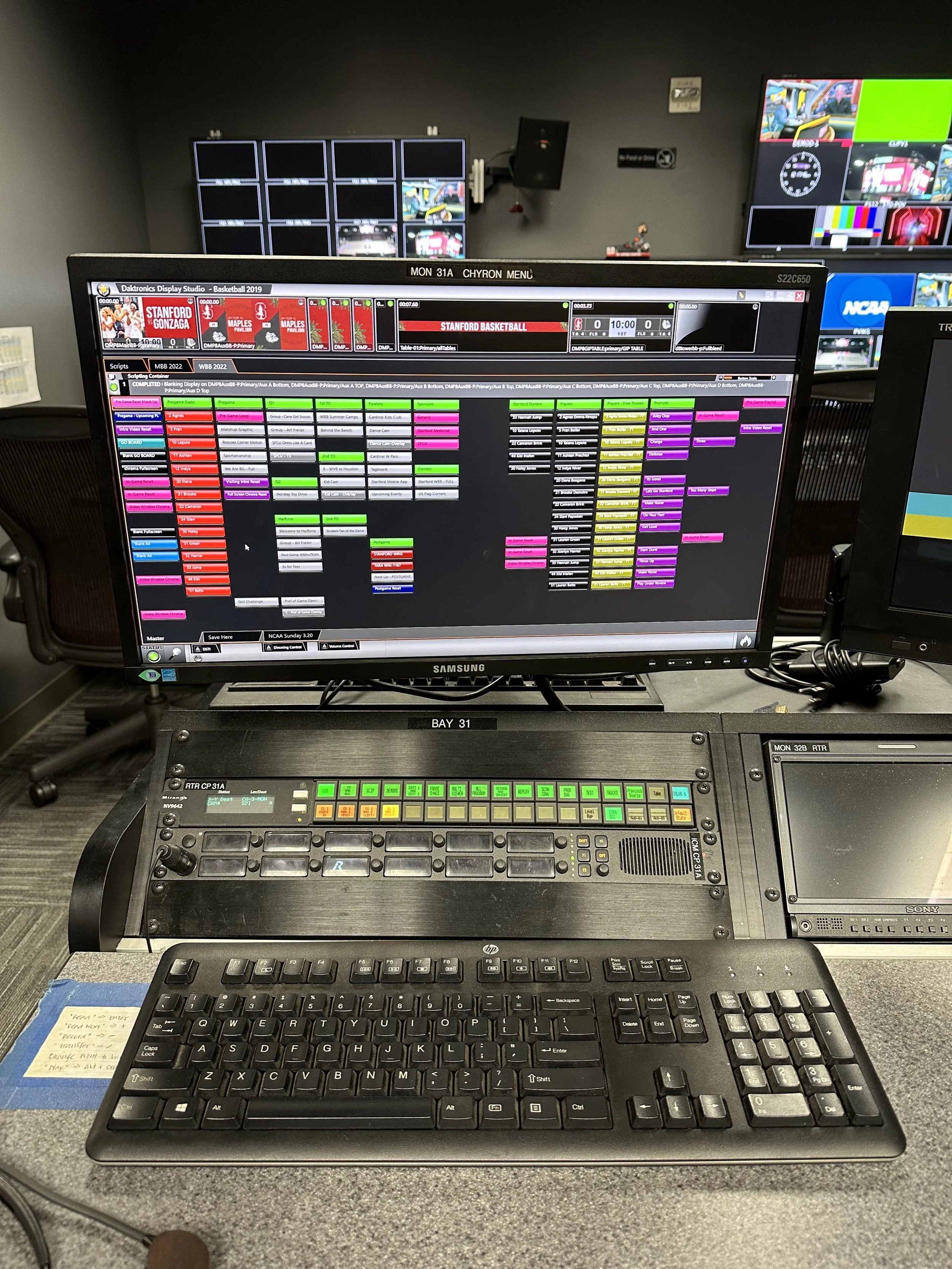
Show Control
The show control will commonly sit next to the replay operator in the control room and is in charge of all media that is not from the live camera feeds or from replay. Graphics informing viewers about upcoming events and previously recorded videos of team players hyping up the audience are managed and put onto the broadcast by the show control. Show control will often be in charge of the graphics for the in-house show at the sporting event in addition to their responsibilities to the broadcast. This means that the show control sends the graphics to the jumbotron and other screens in the arena when the director calls for them.